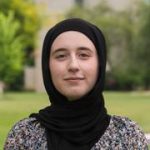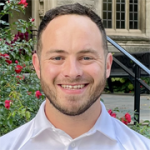Information Box Group
Martin Gibala
Professor; Faculty Of Science Research Chair
My research examines the integrative physiology of exercise at the molecular to whole body level in both healthy individuals and people with chronic diseases. In addition to basic, mechanistic studies on the regulation of skeletal muscle energy provision, my laboratory conducts applied research that examines the impact of physical training and dietary manipulation on human health and performance. Our recent work has largely focused on the physiological adaptations to intermittent exercise (interval training) and the associated health impacts. I am also interested in science communication and coauthored a bestselling book on the science of time-efficient exercise, The One-Minute Workout: Science Shows a Way to Get Fit That’s Smarter, Faster, Shorter (Penguin Random House, 2017).

Martin Gibala
Professor; Faculty Of Science Research Chair
Changhyun Lim
Post Doc Fellow
Changhyun Lim is a Postdoctoral Fellow in Professor Stuart Phillip’s Protein Metabolism Research Laboratory in the Department of Kinesiology. The focus of his research is to explore non-pharmacological strategies (e.g., physical activity and nutrition) to overcome muscle loss and dysfunction in aging, and the molecular mechanisms underpinning muscle adaptation in response to nutritional interventions and physical activity/inactivity.
Supervisor: Dr. Stuart Phillips
Vladimir Ljubicic
Associate Professor; Acting Associate Chair – Graduate Studies; Canada Research Chair (Tier 2) in Neuromuscular Plasticity in Health and Disease
Neuromuscular plasticity refers to the remodeling of the neuromuscular system in response to genetic or environmental cues. Neuromuscular disorders, including the neuromuscular alterations that are hallmarks of advanced aging, are more common in Canada then generally appreciated. The central experimental questions that form the foundation of our research program are: 1) What roles do phenotype-modifying proteins play in the maintenance and remodeling of the peripheral neuromuscular system, and 2) Are these molecules efficacious therapeutic targets for neuromuscular disorders? To address these questions, we design investigations around rational lifestyle- and pharmacological-based strategies focused on the manipulation of powerful phenotype-bending molecules in the neuromuscular system. Furthermore, we employ an integrative and rigorous cell-to-animal experimental approach, as well as an innovative combination of molecular physiological solutions. The long-term goal of our research is to expand fundamental understanding of the mechanisms governing neuromuscular plasticity, as well as to identify novel, evidence-based therapeutic strategies to improve the lives of those with compromised neuromuscular systems.

Vladimir Ljubicic
Associate Professor; Acting Associate Chair – Graduate Studies; Canada Research Chair (Tier 2) in Neuromuscular Plasticity in Health and Disease
Maureen MacDonald
Professor; Dean, Faculty of Science
Most of us realize that our blood vessels play an important role in transporting blood to and from all of the tissues of our body. The human cardiovascular system is continually adapting to and co-coordinating the differing requirements of the body tissues and the energy demands of skeletal muscle alone are capable of changing 100 fold within seconds of the onset of a new task. Blood vessels are much more than static tubes for transporting blood. The structure and function of our blood vessels can adapt to challenges they are presented with and can change significantly in both health and disease. Two important features of our arteries (blood vessels which transport blood away from the heart) are how flexible (stiffness) they are and how much they can expand (dilate) when faced with the challenges of increasing pressure and/or flow. We know that these two features, stiffness and dilation, change with disease processes, aging, spinal cord injury and some exercise programs but we know very little about what regulates these changes. In my laboratory we have been studying the role that exercise, which can result in large pressure and flow challenges to the arteries, plays in changing arterial structure and function. We examine the responses of a variety of components of the cardiovascular system to exercise challenges in order to determine control mechanisms. The specific cardiovascular variables, which are central to this research, are blood pressure, blood flow and arterial stiffness, diameter, wall thickness and dilation. Objectives of my research program include examination of the impact of alterations in vessel stiffness and function on skeletal muscle blood flow responses both at rest, and during exercise. Our continuing studies will focus on the use of cutting edge ultrasound technology to examine blood vessel stiffness and regional blood flow in both healthy and clinical populations. The insight gained from these studies will assist in advancing the current basic knowledge of the cardiovascular system as well as identifying the effectiveness of exercise as an intervention in determining basic cardiovascular regulation and in improving health status and lifestyle.
James McKendry
Post Doc Fellow
I am a Canadian Institutes of Health Research (CIHR) Postdoctoral Fellow in Professor Stuart Phillip’s Protein Metabolism Research Laboratory (PMRL) in the Department of Kinesiology, and recently a McCall-MacBain Postdoctoral Teaching and Leadership Fellow. The focus of my research is to explore the cellular and molecular mechanisms that underpin the adaptive response of skeletal muscle to use (i.e., resistance and aerobic exercise), disuse (i.e., immobilization/bed rest), and sarcopenia of aging. Using novel and innovative scientific methods (e.g., stable isotopic tracers), often in unique populations such as master athletes, I am also keen to investigate nascent nutritional interventions to augment exercise-induced muscular adaptations to and mitigate muscle loss in response to immobilization and aging.
Supervisor: Dr. Stuart Phillips
Everson Nunes
Post Doc Fellow
Everson Nunes is a researcher interested in how human nutrition and physical activity modulate metabolism. His research focuses on understanding the roles of nutrition and physical activity in human health and how diet and exercise can be used to prevent or treat diseases (e.g. Cancer, Diabetes, and Obesity).
Supervisor: Dr. Stuart Phillips
Gianni Parise
Professor; Acting Associate Vice-President, Research
Generally, my interests involve understanding the mechanisms of skeletal muscle adaptation and repair to exercise and injury. We focus primarily on skeletal muscle progenitor cells and their role in remodelling of tissue. Additionally, we focus on how muscle progenitor cells fails in aging and examine strategies to rejuvenate the muscle progenitor response to injury and exercise in older adults.

Gianni Parise
Professor; Acting Associate Vice-President, Research
Stuart Phillips
Professor; Associate Chair, Research; Director, Physical Activity Centre of Excellence (PACE); Director, McMaster Centre for Nutrition, Exercise, and Health Research; Canada Research Chair (Tier 1)
Professor Phillips is a Tier 1 Canada Research Chair in Skeletal Muscle Health in Aging. He is a Professor in Kinesiology, and Graduate Faculty in the School of Medicine at McMaster University. He is a fellow of the Canadian Academy of Health Sciences (FCAHS) and the American College of Sports Medicine (ACSM). His research is focused on the impact of nutrition and exercise on the mechanisms of human skeletal muscle protein turnover. He is also keenly interested in diet- and exercise-induced changes in body composition particularly in older persons.His research is funded by the Canadian Institutes for Health Research, the National Science and Engineering Council of Canada, the Canadian Foundation for Innovation, the US NIH, the USDA, and several industry partners.Dr. Phillips was the inaugural recipient of the Enzo Cafarelli Graduate Mentor Award in 2017. He was named to Clarivate’s Highly Cited Award in 2018-2021 as one of the top 1% of all cited researchers in physiology and nutrition. He has more than 50,000 citations and an h-index of 121; https://scholar.google.ca/citations?user=VLu9hqgAAAAJ&hl=en

Stuart Phillips
Professor; Associate Chair, Research; Director, Physical Activity Centre of Excellence (PACE); Director, McMaster Centre for Nutrition, Exercise, and Health Research; Canada Research Chair (Tier 1)
Martin Gibala
Professor; Faculty Of Science Research Chair
My research examines the integrative physiology of exercise at the molecular to whole body level in both healthy individuals and people with chronic diseases. In addition to basic, mechanistic studies on the regulation of skeletal muscle energy provision, my laboratory conducts applied research that examines the impact of physical training and dietary manipulation on human health and performance. Our recent work has largely focused on the physiological adaptations to intermittent exercise (interval training) and the associated health impacts. I am also interested in science communication and coauthored a bestselling book on the science of time-efficient exercise, The One-Minute Workout: Science Shows a Way to Get Fit That’s Smarter, Faster, Shorter (Penguin Random House, 2017).
Martin Gibala
Professor; Faculty Of Science Research Chair
My research examines the integrative physiology of exercise at the molecular to whole body level in both healthy individuals and people with chronic diseases. In addition to basic, mechanistic studies on the regulation of skeletal muscle energy provision, my laboratory conducts applied research that examines the impact of physical training and dietary manipulation on human health and performance. Our recent work has largely focused on the physiological adaptations to intermittent exercise (interval training) and the associated health impacts. I am also interested in science communication and coauthored a bestselling book on the science of time-efficient exercise, The One-Minute Workout: Science Shows a Way to Get Fit That’s Smarter, Faster, Shorter (Penguin Random House, 2017).
Changhyun Lim
Post Doc Fellow
Changhyun Lim is a Postdoctoral Fellow in Professor Stuart Phillip’s Protein Metabolism Research Laboratory in the Department of Kinesiology. The focus of his research is to explore non-pharmacological strategies (e.g., physical activity and nutrition) to overcome muscle loss and dysfunction in aging, and the molecular mechanisms underpinning muscle adaptation in response to nutritional interventions and physical activity/inactivity.
Supervisor: Dr. Stuart Phillips
Changhyun Lim
Post Doc Fellow
Changhyun Lim is a Postdoctoral Fellow in Professor Stuart Phillip’s Protein Metabolism Research Laboratory in the Department of Kinesiology. The focus of his research is to explore non-pharmacological strategies (e.g., physical activity and nutrition) to overcome muscle loss and dysfunction in aging, and the molecular mechanisms underpinning muscle adaptation in response to nutritional interventions and physical activity/inactivity.
Supervisor: Dr. Stuart Phillips
Vladimir Ljubicic
Associate Professor; Acting Associate Chair – Graduate Studies; Canada Research Chair (Tier 2) in Neuromuscular Plasticity in Health and Disease
Neuromuscular plasticity refers to the remodeling of the neuromuscular system in response to genetic or environmental cues. Neuromuscular disorders, including the neuromuscular alterations that are hallmarks of advanced aging, are more common in Canada then generally appreciated. The central experimental questions that form the foundation of our research program are: 1) What roles do phenotype-modifying proteins play in the maintenance and remodeling of the peripheral neuromuscular system, and 2) Are these molecules efficacious therapeutic targets for neuromuscular disorders? To address these questions, we design investigations around rational lifestyle- and pharmacological-based strategies focused on the manipulation of powerful phenotype-bending molecules in the neuromuscular system. Furthermore, we employ an integrative and rigorous cell-to-animal experimental approach, as well as an innovative combination of molecular physiological solutions. The long-term goal of our research is to expand fundamental understanding of the mechanisms governing neuromuscular plasticity, as well as to identify novel, evidence-based therapeutic strategies to improve the lives of those with compromised neuromuscular systems.
Vladimir Ljubicic
Associate Professor; Acting Associate Chair – Graduate Studies; Canada Research Chair (Tier 2) in Neuromuscular Plasticity in Health and Disease
Neuromuscular plasticity refers to the remodeling of the neuromuscular system in response to genetic or environmental cues. Neuromuscular disorders, including the neuromuscular alterations that are hallmarks of advanced aging, are more common in Canada then generally appreciated. The central experimental questions that form the foundation of our research program are: 1) What roles do phenotype-modifying proteins play in the maintenance and remodeling of the peripheral neuromuscular system, and 2) Are these molecules efficacious therapeutic targets for neuromuscular disorders? To address these questions, we design investigations around rational lifestyle- and pharmacological-based strategies focused on the manipulation of powerful phenotype-bending molecules in the neuromuscular system. Furthermore, we employ an integrative and rigorous cell-to-animal experimental approach, as well as an innovative combination of molecular physiological solutions. The long-term goal of our research is to expand fundamental understanding of the mechanisms governing neuromuscular plasticity, as well as to identify novel, evidence-based therapeutic strategies to improve the lives of those with compromised neuromuscular systems.
Maureen MacDonald
Professor; Dean, Faculty of Science
Most of us realize that our blood vessels play an important role in transporting blood to and from all of the tissues of our body. The human cardiovascular system is continually adapting to and co-coordinating the differing requirements of the body tissues and the energy demands of skeletal muscle alone are capable of changing 100 fold within seconds of the onset of a new task. Blood vessels are much more than static tubes for transporting blood. The structure and function of our blood vessels can adapt to challenges they are presented with and can change significantly in both health and disease. Two important features of our arteries (blood vessels which transport blood away from the heart) are how flexible (stiffness) they are and how much they can expand (dilate) when faced with the challenges of increasing pressure and/or flow. We know that these two features, stiffness and dilation, change with disease processes, aging, spinal cord injury and some exercise programs but we know very little about what regulates these changes. In my laboratory we have been studying the role that exercise, which can result in large pressure and flow challenges to the arteries, plays in changing arterial structure and function. We examine the responses of a variety of components of the cardiovascular system to exercise challenges in order to determine control mechanisms. The specific cardiovascular variables, which are central to this research, are blood pressure, blood flow and arterial stiffness, diameter, wall thickness and dilation. Objectives of my research program include examination of the impact of alterations in vessel stiffness and function on skeletal muscle blood flow responses both at rest, and during exercise. Our continuing studies will focus on the use of cutting edge ultrasound technology to examine blood vessel stiffness and regional blood flow in both healthy and clinical populations. The insight gained from these studies will assist in advancing the current basic knowledge of the cardiovascular system as well as identifying the effectiveness of exercise as an intervention in determining basic cardiovascular regulation and in improving health status and lifestyle.
Maureen MacDonald
Professor; Dean, Faculty of Science
Most of us realize that our blood vessels play an important role in transporting blood to and from all of the tissues of our body. The human cardiovascular system is continually adapting to and co-coordinating the differing requirements of the body tissues and the energy demands of skeletal muscle alone are capable of changing 100 fold within seconds of the onset of a new task. Blood vessels are much more than static tubes for transporting blood. The structure and function of our blood vessels can adapt to challenges they are presented with and can change significantly in both health and disease. Two important features of our arteries (blood vessels which transport blood away from the heart) are how flexible (stiffness) they are and how much they can expand (dilate) when faced with the challenges of increasing pressure and/or flow. We know that these two features, stiffness and dilation, change with disease processes, aging, spinal cord injury and some exercise programs but we know very little about what regulates these changes. In my laboratory we have been studying the role that exercise, which can result in large pressure and flow challenges to the arteries, plays in changing arterial structure and function. We examine the responses of a variety of components of the cardiovascular system to exercise challenges in order to determine control mechanisms. The specific cardiovascular variables, which are central to this research, are blood pressure, blood flow and arterial stiffness, diameter, wall thickness and dilation. Objectives of my research program include examination of the impact of alterations in vessel stiffness and function on skeletal muscle blood flow responses both at rest, and during exercise. Our continuing studies will focus on the use of cutting edge ultrasound technology to examine blood vessel stiffness and regional blood flow in both healthy and clinical populations. The insight gained from these studies will assist in advancing the current basic knowledge of the cardiovascular system as well as identifying the effectiveness of exercise as an intervention in determining basic cardiovascular regulation and in improving health status and lifestyle.
James McKendry
Post Doc Fellow
I am a Canadian Institutes of Health Research (CIHR) Postdoctoral Fellow in Professor Stuart Phillip’s Protein Metabolism Research Laboratory (PMRL) in the Department of Kinesiology, and recently a McCall-MacBain Postdoctoral Teaching and Leadership Fellow. The focus of my research is to explore the cellular and molecular mechanisms that underpin the adaptive response of skeletal muscle to use (i.e., resistance and aerobic exercise), disuse (i.e., immobilization/bed rest), and sarcopenia of aging. Using novel and innovative scientific methods (e.g., stable isotopic tracers), often in unique populations such as master athletes, I am also keen to investigate nascent nutritional interventions to augment exercise-induced muscular adaptations to and mitigate muscle loss in response to immobilization and aging.
Supervisor: Dr. Stuart Phillips
James McKendry
Post Doc Fellow
I am a Canadian Institutes of Health Research (CIHR) Postdoctoral Fellow in Professor Stuart Phillip’s Protein Metabolism Research Laboratory (PMRL) in the Department of Kinesiology, and recently a McCall-MacBain Postdoctoral Teaching and Leadership Fellow. The focus of my research is to explore the cellular and molecular mechanisms that underpin the adaptive response of skeletal muscle to use (i.e., resistance and aerobic exercise), disuse (i.e., immobilization/bed rest), and sarcopenia of aging. Using novel and innovative scientific methods (e.g., stable isotopic tracers), often in unique populations such as master athletes, I am also keen to investigate nascent nutritional interventions to augment exercise-induced muscular adaptations to and mitigate muscle loss in response to immobilization and aging.
Supervisor: Dr. Stuart Phillips
Everson Nunes
Post Doc Fellow
Everson Nunes is a researcher interested in how human nutrition and physical activity modulate metabolism. His research focuses on understanding the roles of nutrition and physical activity in human health and how diet and exercise can be used to prevent or treat diseases (e.g. Cancer, Diabetes, and Obesity).
Supervisor: Dr. Stuart Phillips
Everson Nunes
Post Doc Fellow
Everson Nunes is a researcher interested in how human nutrition and physical activity modulate metabolism. His research focuses on understanding the roles of nutrition and physical activity in human health and how diet and exercise can be used to prevent or treat diseases (e.g. Cancer, Diabetes, and Obesity).
Supervisor: Dr. Stuart Phillips
Gianni Parise
Professor; Acting Associate Vice-President, Research
Generally, my interests involve understanding the mechanisms of skeletal muscle adaptation and repair to exercise and injury. We focus primarily on skeletal muscle progenitor cells and their role in remodelling of tissue. Additionally, we focus on how muscle progenitor cells fails in aging and examine strategies to rejuvenate the muscle progenitor response to injury and exercise in older adults.
Gianni Parise
Professor; Acting Associate Vice-President, Research
Generally, my interests involve understanding the mechanisms of skeletal muscle adaptation and repair to exercise and injury. We focus primarily on skeletal muscle progenitor cells and their role in remodelling of tissue. Additionally, we focus on how muscle progenitor cells fails in aging and examine strategies to rejuvenate the muscle progenitor response to injury and exercise in older adults.
Stuart Phillips
Professor; Associate Chair, Research; Director, Physical Activity Centre of Excellence (PACE); Director, McMaster Centre for Nutrition, Exercise, and Health Research; Canada Research Chair (Tier 1)
Professor Phillips is a Tier 1 Canada Research Chair in Skeletal Muscle Health in Aging. He is a Professor in Kinesiology, and Graduate Faculty in the School of Medicine at McMaster University. He is a fellow of the Canadian Academy of Health Sciences (FCAHS) and the American College of Sports Medicine (ACSM). His research is focused on the impact of nutrition and exercise on the mechanisms of human skeletal muscle protein turnover. He is also keenly interested in diet- and exercise-induced changes in body composition particularly in older persons.His research is funded by the Canadian Institutes for Health Research, the National Science and Engineering Council of Canada, the Canadian Foundation for Innovation, the US NIH, the USDA, and several industry partners.Dr. Phillips was the inaugural recipient of the Enzo Cafarelli Graduate Mentor Award in 2017. He was named to Clarivate’s Highly Cited Award in 2018-2021 as one of the top 1% of all cited researchers in physiology and nutrition. He has more than 50,000 citations and an h-index of 121; https://scholar.google.ca/citations?user=VLu9hqgAAAAJ&hl=en
Stuart Phillips
Professor; Associate Chair, Research; Director, Physical Activity Centre of Excellence (PACE); Director, McMaster Centre for Nutrition, Exercise, and Health Research; Canada Research Chair (Tier 1)
Professor Phillips is a Tier 1 Canada Research Chair in Skeletal Muscle Health in Aging. He is a Professor in Kinesiology, and Graduate Faculty in the School of Medicine at McMaster University. He is a fellow of the Canadian Academy of Health Sciences (FCAHS) and the American College of Sports Medicine (ACSM). His research is focused on the impact of nutrition and exercise on the mechanisms of human skeletal muscle protein turnover. He is also keenly interested in diet- and exercise-induced changes in body composition particularly in older persons.His research is funded by the Canadian Institutes for Health Research, the National Science and Engineering Council of Canada, the Canadian Foundation for Innovation, the US NIH, the USDA, and several industry partners.Dr. Phillips was the inaugural recipient of the Enzo Cafarelli Graduate Mentor Award in 2017. He was named to Clarivate’s Highly Cited Award in 2018-2021 as one of the top 1% of all cited researchers in physiology and nutrition. He has more than 50,000 citations and an h-index of 121; https://scholar.google.ca/citations?user=VLu9hqgAAAAJ&hl=en



























